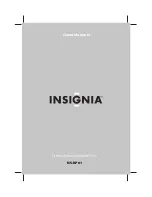
GUIDE TABLE FOR SELECTION OF WELDING PARAMETERS WITH REFERENCE TO THE MOST TYPI-
CAL APPLICATIONS AND MOST COMMONLY USED WIRE.
7.1.3 Gases
MIG-MAG welding is characterised mainly by the type of gas used: inert for MIG welding (Metal Inert Gas), active for MAG wel-
ding (Metal Active Gas).
Carbon dioxide (CO2)
Using CO2 as a protection gas, high penetrations are obtained with high feed speed and good mechanical properties together with a
low operating cost. On the other hand, the use of this gas creates considerable problems with the final chemical composition of the
joints as there is a loss of easily oxidisable elements with simultaneous enrichment of carbon in the weld pool.
Welding with pure CO2 also creates other types of problems such as excessive spray and the formation of carbon monoxide porosity.
Argon
This inert gas is used pure in the welding of light alloys whereas for the welding of chromium-nickel stainless steel it is preferable to
work with the addition of oxygen and CO2 in a percentage of 2% as this contributes to the stability of the arc and improves the
form of the bead.
Helium
This gas is used as an alternative to argon and permits greater penetration (on thick gauges) and faster feed.
Argon-Helium mixture
Provides a more stable arc than pure helium, and greater pene-tration and speed than argon.
Argon- CO2 and Argon- CO2 - Oxygen mixture
These mixtures are used in the welding of ferrous materials especially in SHORT-ARC conditions as they improve the specific heat
contribution. They can also be used in SPRAY-ARC. Normally the mixture contains a percentage of CO2 ranging from 8% to 20%
and O2 around 5%.
25
Wire diameter - weight per metre
Voltage
arc (v)
0,8 mm
1,0-1,2 mm
1,6 mm
2,4 mm
Low penetration for thin
gauges
60 - 160 A
100 - 175 A
Good penetration and
melting control
Good flat and vertical
melting
Not used
16 - 22
SHORT - ARC
24 - 28
SEMI SHORT-ARC
(transition area)
30 - 45
SPRAY - ARC
120 - 180 A
Automatic welding
downwards
250 - 350 A
Automatic welding
with high voltage
200 - 300 A
Automatic
fillet weld
150 - 250 A
Low penetration with
adjustment to 200 A
150 - 250 A
Automatic welding
with multiple runs
200 - 350 A
Good penetration
downwards
300 - 500 A
Good penetration, high
deposit on thick gauges
500 - 750 A
150 - 200 A
Not used
300 - 400 A
Содержание NEOMIG 1600
Страница 137: ...137 1 1 1 1 1 1 NR10 1 1 2 1 2 1 3 1 4 EMC EN60974 10 1 4 1 1 4 2...
Страница 143: ...143 3 5 6 A1 MIG L1 4 TIG MIG 5 L1 L2 L2 L2 6 MIG...
Страница 144: ...144 7 7 1 MIG 7 7 7 1 1 SHORT ARC 2a 8 SHORT a SPRAY ARC b SPRAY ARC 2b 7 1 2 9 10 9 10 2a 2b...
Страница 149: ...149 Schema Diagram Schaltplan Sch ma Esquema Diagrama Schema kopplingsschema Oversigt Skjema Kytkent kaavio NEOMIG 1600...
Страница 150: ...150 Schema Diagram Schaltplan Sch ma Esquema Diagrama Schema kopplingsschema Oversigt Skjema Kytkent kaavio NEOMIG 2200...
















































